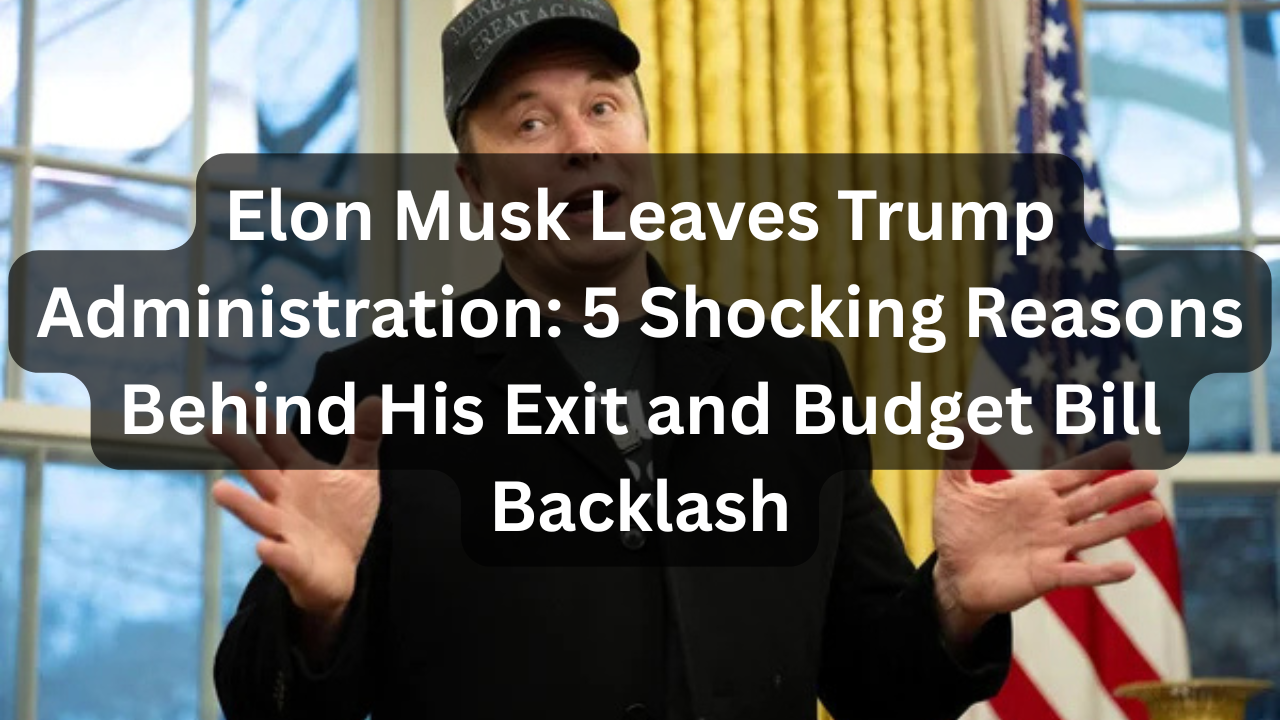Elon Musk Leaves Trump Administration: 5 Key Reasons Behind the Surprise Exit
In a surprising turn of events, Elon Musk leaves the Trump administration, marking the end of his controversial yet impactful role as head of the Department of Government Efficiency (DOGE). Known for his bold vision and drive for innovation, Musk thanked former President Donald Trump for the opportunity to tackle federal spending inefficiencies. But why did one of Trump’s most prominent allies choose to walk away?
Let’s explore the five major reasons why Elon Musk leaves Trump administration at this critical juncture.
1. Elon Musk Leaves Trump Administration Due to Role’s Time Limitations
One of the primary reasons Elon Musk leaves Trump administration is the legal restriction of his advisory position. As a Special Government Employee, Musk’s service was capped at 130 days per year. His term was always intended to be temporary, and with May 2025 marking the end of his allowable service days, this transition was expected—regardless of political tensions.
2. Conflict Over Trump’s ‘Big, Beautiful Bill’
Tensions peaked when Elon Musk publicly criticized Trump’s spending bill, calling it contradictory to DOGE’s mission. Musk described the legislation—which paired tax cuts with expanded spending—as fiscally irresponsible. He famously said, “A bill can be big or it can be beautiful, but I don’t know if it can be both.” This direct opposition to Trump’s flagship policy made Musk’s position untenable and likely sped up his exit.
3. Elon Musk Leaves Trump Administration Over Bureaucratic Frustrations
Another reason Elon Musk leaves Trump administration is due to the intense bureaucratic resistance he faced. Musk described the federal bureaucracy as “much worse than I realized,” calling his reform efforts an “uphill battle.” Despite early enthusiasm, his initiative became a scapegoat for unrelated issues, making it difficult to implement lasting change.
4. Limited Results from DOGE’s Cost-Cutting Campaign
Despite lofty goals of saving $2 trillion, DOGE’s achievements under Musk fell short. The department cut roughly 100,000 federal jobs—a fraction of the targeted 288,000. Reported savings of $175 billion, while significant, didn’t meet original expectations. This gap between ambition and outcome was a clear signal for Musk to refocus his efforts elsewhere.
5. Refocusing on Tesla, SpaceX, and X
Finally, Elon Musk leaves Trump administration to prioritize his business ventures. With Tesla facing sales declines, SpaceX enduring mission failures, and social media platform X experiencing outages, Musk announced he would reduce time spent on DOGE. In a Tesla earnings call, he emphasized the need to return full-time to his companies amid rising operational challenges.
Trump Reacts as Elon Musk Leaves Trump Administration
When asked about Musk’s criticism, Trump downplayed the disagreement. “We have to get a lot of votes,” he said, justifying the bill’s compromises. Still, Elon Musk’s departure from the Trump administration has sparked questions about the future of DOGE and whether the initiative can survive without its most influential leader.
Final Thoughts
As Elon Musk leaves Trump administration, the move highlights deeper divisions over fiscal policy, government reform, and the limits of private sector leadership in public office. Whether DOGE will continue its mission without Musk remains to be seen—but one thing is clear: this departure marks a significant shift in the relationship between two of the most powerful figures in recent American politics.
